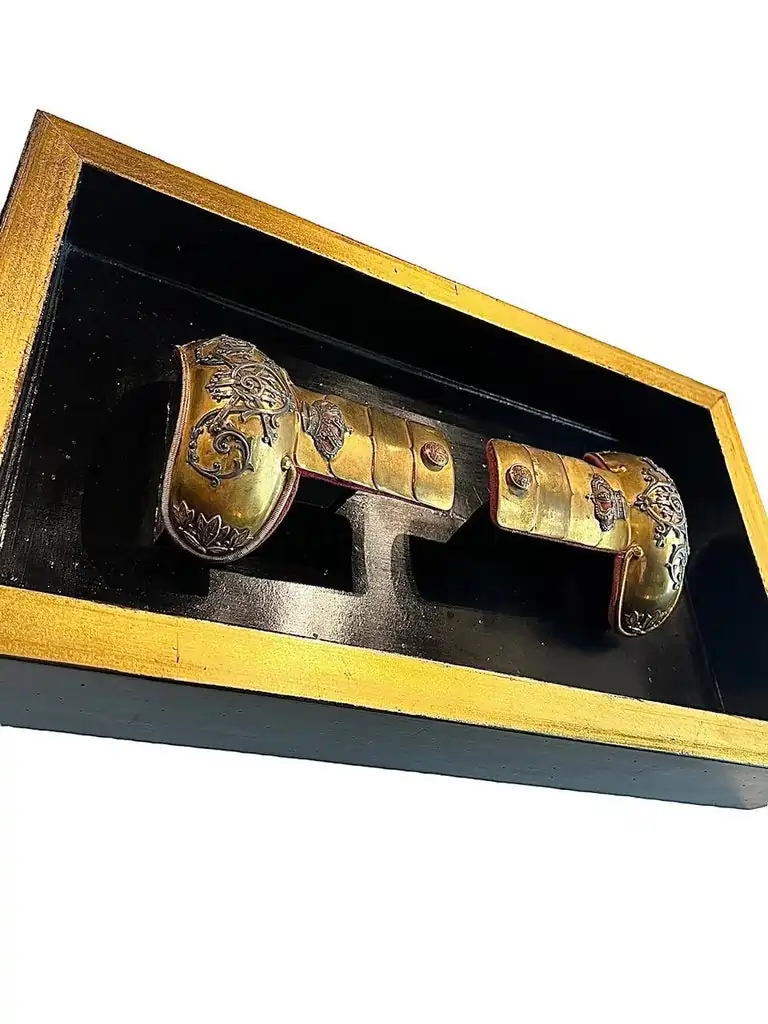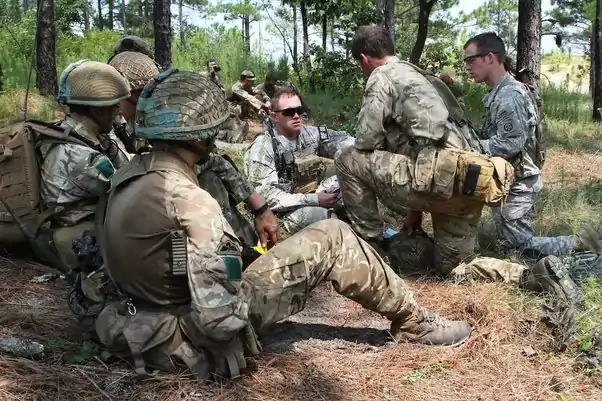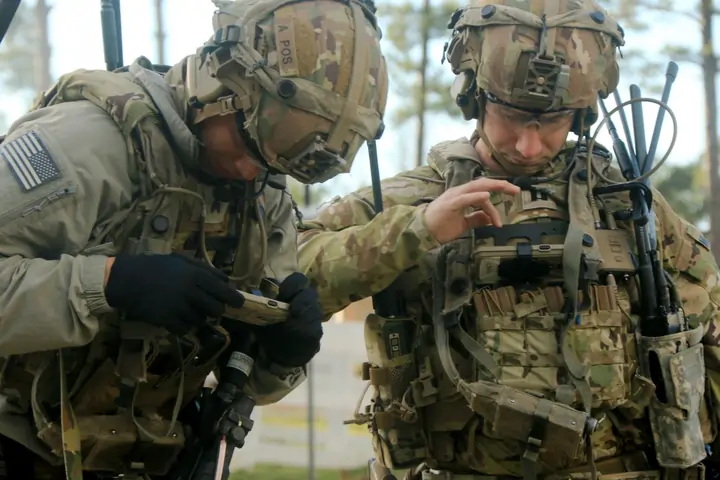Military insignia have always held a special place in the hearts and minds of both soldiers and civilians. Among these, soldiers shoulder adornment stands out as a prominent and significant element. These adornments not only reflect rank and unit identity but also carry a rich historical legacy and cultural significance. Let’s delve deep into the world of shoulder adornments, exploring their history, types, significance, and much more.
Historical Background
Origins of Shoulder Adornments
The concept of soldiers shoulder adornment can be traced back to ancient civilizations. These early military decorations were not just about aesthetics; they served practical purposes, such as identifying rank and unit on the battlefield.
Ancient Military Shoulder Decorations
In ancient Rome, for instance, soldiers wore distinct shoulder decorations to signify their legion and rank. This tradition of adorning shoulders has evolved significantly over the centuries, reflecting changes in military tactics, hierarchy, and cultural practices.

Shoulder Adornments in Different Eras
Medieval Period
During the medieval period, knights and soldiers began to use more elaborate shoulder decorations. These adornments often included intricate designs, family crests, and symbols of allegiance, serving as both protective gear and status symbols.
Renaissance and Early Modern Period
The Renaissance brought a renewed interest in art and design, which extended to military uniforms. Shoulder adornments became more stylized, with intricate embroidery and unique patterns representing different military units and ranks.
19th Century to World War I
By the 19th century, military uniforms had become standardized, and soldiers shoulder adornment was a key element. Epaulettes and shoulder boards were introduced, providing a clear visual indicator of a soldier’s rank and unit.
Modern Shoulder Adornments
World War II
World War II saw further evolution in shoulder adornments. Practicality and mass production became priorities, but the symbolic value of these decorations remained intact. Shoulder patches and rank insignia were widely used across all military branches.
Cold War Era
During the Cold War, shoulder adornments continued to evolve. New materials and manufacturing techniques allowed for more durable and distinctive decorations, reflecting the changing nature of military conflicts and alliances.
Contemporary Military Practices
In modern times, soldiers shoulder adornment encompasses a wide range of designs and materials. Digital camouflage patterns, Velcro patches, and embroidered insignia are now common, reflecting the technological advancements and diverse roles within today’s military forces.

Types of Soldiers Shoulder Adornments
Epaulettes
Epaulettes are one of the most recognizable forms of shoulder adornment. Originating in the 18th century, these decorative shoulder pieces often indicate rank and are typically made of cloth or metal.
Shoulder Boards
Shoulder boards, or shoulder straps, are another common type of adornment. These are used extensively to display rank insignia and can be found in various styles and materials.
Rank Insignia
Rank insignia are essential components of soldiers shoulder adornment. They provide a clear indication of a soldier’s rank within the military hierarchy and are often accompanied by other decorative elements.
Unit Patches
Unit patches are used to identify a soldier’s specific unit or division. These patches can be highly detailed and are often designed to reflect the unit’s history, achievements, and spirit.
Significance and Symbolism
Rank and Hierarchy
The primary purpose of soldiers shoulder adornment is to signify rank and hierarchy. This visual representation helps maintain order and discipline within the military structure.
Unit Identity and Pride
Shoulder adornments also foster a sense of unit identity and pride. Soldiers wear these decorations as symbols of their affiliation and loyalty to their units, creating a bond among comrades.
Commemoration and Honors
In addition to rank and unit identity, shoulder adornments can commemorate specific achievements or honors. Medals, badges, and other decorations are often incorporated into shoulder designs to recognize a soldier’s bravery and service.
Materials and Design
Evolution of Materials Used
The materials used for soldiers shoulder adornment have evolved over time. Early decorations were made from natural materials like leather and cloth, while modern adornments often use synthetic fabrics and metals.
Design Elements and Variations
The design of shoulder adornments varies widely, reflecting different military traditions and cultures. Common elements include embroidery, metal accents, and distinctive color schemes, each carrying specific meanings and symbolism.

Cultural Differences
Western Military Traditions
In Western military traditions, shoulder adornments are typically bold and highly symbolic. They often incorporate national colors, military crests, and other patriotic elements.
Eastern Military Traditions
Eastern military traditions, on the other hand, may emphasize different aspects in their shoulder adornments. In some cultures, intricate patterns and traditional symbols play a significant role.
Unique Practices Around the World
Around the world, unique practices in shoulder adornments highlight the diversity of military cultures. From the feathered epaulettes of South American forces to the ornate shoulder boards of European armies, each tradition brings its own flair to military attire.
Soldiers Shoulder Adornment in Popular Culture
Movies and Television
Shoulder adornments have made their mark in popular culture, especially in movies and television. Iconic military uniforms from films like “Saving Private Ryan” and shows like “Band of Brothers” showcase the importance of these decorations.
Literature and Art
Literature and art also depict soldiers shoulder adornment in various ways. Historical novels and war paintings often feature detailed depictions of military uniforms, highlighting their significance.
Video Games
In video games, shoulder adornments add realism and depth to characters. Games like “Call of Duty” and “Battlefield” include detailed military uniforms, enhancing the immersive experience for players.
Collecting Military Shoulder Adornments
Why Collect?
Collecting soldiers shoulder adornment is a popular hobby among military enthusiasts. These items offer a tangible connection to history and provide insight into the evolution of military traditions.
Tips for Collectors
For those interested in collecting, it’s essential to research and verify the authenticity of items. Understanding the historical context and variations can help collectors make informed decisions.
Preservation and Display
Proper preservation and display are crucial for maintaining the condition of shoulder adornments. Collectors should use appropriate storage methods and display techniques to protect their valuable items.
Impact on Military Morale and Discipline
Boosting Morale
Soldiers shoulder adornment plays a significant role in boosting morale. Wearing these decorations instills a sense of pride and accomplishment, motivating soldiers to perform their duties with dedication.
Maintaining Discipline
Shoulder adornments also help maintain discipline within the ranks. They provide a clear visual representation of authority and responsibility, reinforcing the chain of command.
Enhancing Unity
By fostering a sense of unity and belonging, shoulder adornments contribute to the overall cohesion of military units. Soldiers feel a stronger connection to their comrades and their mission.

Controversies and Misuses
Unauthorized Wear
Unauthorized wear of military shoulder adornments can lead to controversies. Wearing decorations without proper authorization undermines the integrity of military traditions and can cause tension within the ranks.
Cultural Sensitivity Issues
Some shoulder adornments may carry cultural significance that needs to be respected. Misusing or misrepresenting these symbols can lead to cultural sensitivity issues and misunderstandings.
Historical Misrepresentation
Historical misrepresentation of soldiers shoulder adornment can distort our understanding of military history. Accurate representation and preservation of these items are crucial for maintaining historical integrity.
Future of Soldiers Shoulder Adornments
Technological Innovations
Technological innovations are likely to influence the future of shoulder adornments. Advanced materials and manufacturing techniques will continue to enhance the durability and functionality of these decorations.
Changing Military Practices
As military practices evolve, so too will the design and use of shoulder adornments. Future conflicts and missions may bring new requirements and innovations in military attire.
Future Trends
Future trends in soldiers shoulder adornment may include more customizable and adaptive designs. Personalization and versatility will likely become more prominent, reflecting the changing needs of modern soldiers.

How to Identify Authentic Shoulder Adornments
Key Identification Tips
To identify authentic shoulder adornments, look for specific markers such as manufacturer stamps, material quality, and historical accuracy. Knowledge of different eras and designs is essential.
Spotting Fakes
It takes an acute eye and extensive investigation to identify fakes. Be wary of items that appear too perfect or lack the expected wear and patina of genuine artifacts.
Resources for Verification
Numerous resources are available for verifying the authenticity of shoulder adornments. Books, online databases, and expert consultations can provide valuable information for collectors and enthusiasts.
Conclusion
Soldiers shoulder adornment is more than just a decorative element; it is a profound symbol of military tradition, honor, and identity. From their ancient origins to modern-day practices, these adornments have evolved, reflecting changes in military tactics, technology, and culture. Understanding the significance and history of shoulder adornments offers a glimpse into the rich tapestry of military life and heritage.
Certainly! Here are three references that provide additional information on the topic of Soldiers shoulder adornments:
- Rottman, Gordon L. “World War II US Army Combat Equipments.” Osprey Publishing, 1991.
- This book provides detailed descriptions and illustrations of US Army uniforms and equipment used during World War II, including shoulder adornments such as rank insignia and unit patches.
- Stanton, Shelby L. “U.S. Army Uniforms of World War II.” Stackpole Books, 1994.
- This comprehensive guide offers an in-depth look at the uniforms and insignia of the US Army during World War II, covering various types of shoulder adornments and their significance.
- Sumner, Ian. “British Colours and Standards 1747-1881 (2): Infantry.” Osprey Publishing, 2001.
- This volume explores the history and evolution of British military insignia and standards, including the development and use of shoulder adornments in the infantry during the 18th and 19th centuries.
These references should provide valuable context and additional details to complement the information presented in the article.
Here are three website references that provide useful information on Soldiers shoulder adornments:
- The Institute of Heraldry (TIOH) – U.S. Army
- Website: The Institute of Heraldry
- This official site provides detailed information on the design, symbolism, and history of U.S. Army insignia, including shoulder patches and rank insignia.
- Military History Visualized
- Website: Military History Visualized
- This website offers a range of articles and videos that cover the history of military uniforms and insignia from various countries and periods, with a focus on visual representation and analysis.
- Uniformology
- Website: Uniformology
- Uniformology provides a comprehensive database of military uniforms and insignia from around the world, featuring detailed illustrations and historical context for shoulder adornments and other uniform elements.
These websites should provide further insights and detailed information related to the topic of soldiers’ shoulder adornments.
Learn How to Get My Husband on My Side: A Complete Guide and Learn More on our website.
FAQs
What is the most common type of soldiers shoulder adornment?
The most common type is the rank insignia, which clearly indicates a soldier’s rank within the military hierarchy.
How can you tell the rank of a soldier by their shoulder adornment?
Different ranks are represented by specific symbols and designs on the shoulder adornment, such as stripes, stars, or bars.
Are soldiers shoulder adornments the same in every country?
No, shoulder adornments vary widely between countries, reflecting different military traditions, cultures, and practices.
What should collectors look for when buying shoulder adornments?
Collectors should look for authenticity markers such as manufacturer stamps, historical accuracy, and material quality. It’s also important to research the item’s background.
How do shoulder adornments impact a soldier’s career?
Shoulder adornments play a crucial role in a soldier’s career by indicating their rank, unit, and achievements, which can affect their duties and responsibilities within the military.
